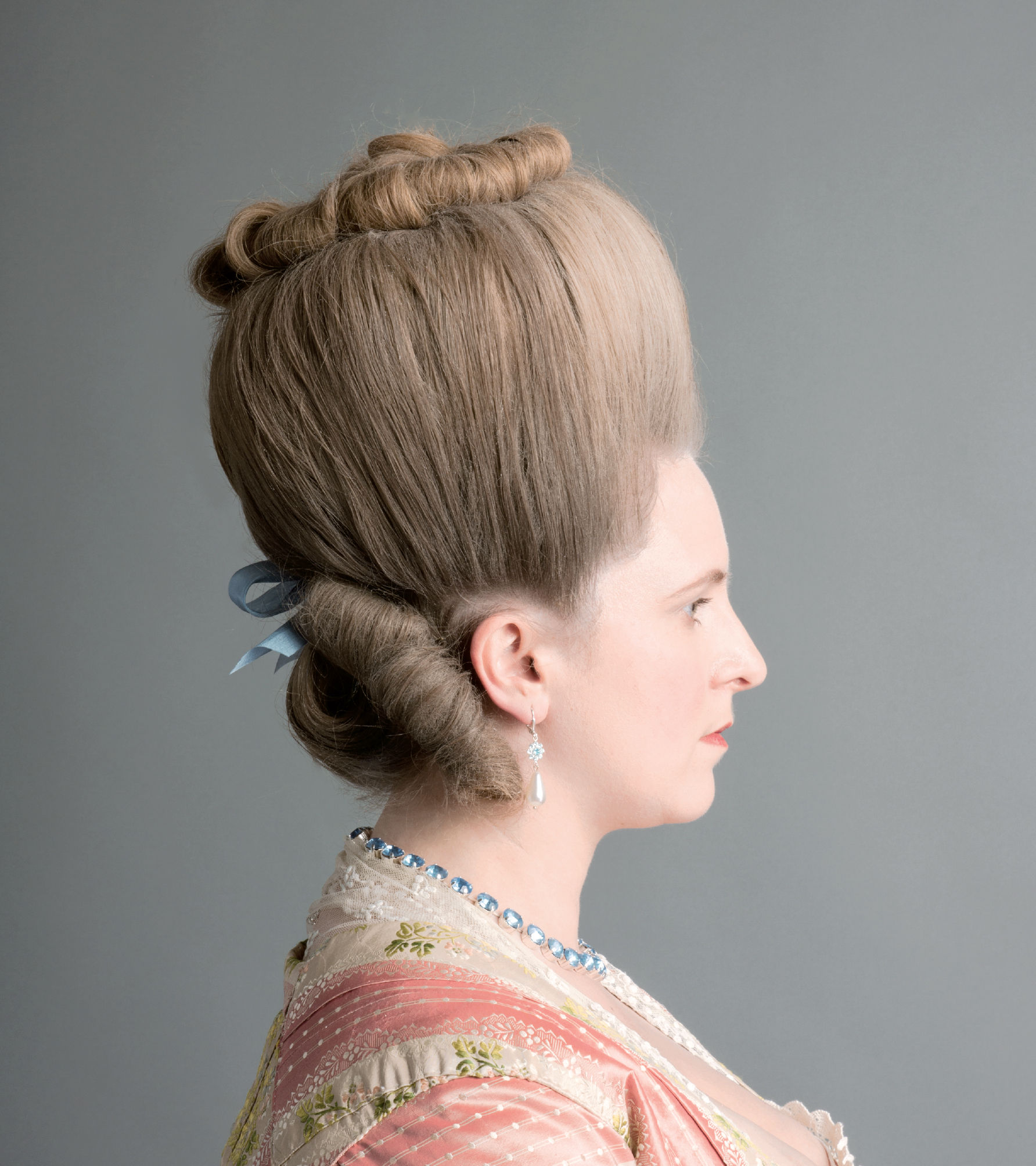
The early- to mid-1770s hairstyles have become so iconic that it seems everyone can visualize some sort of variation of the Marie Antoinette–style “tall, white, powdered hair/wig” cliché. Don’t even get us started on those heinous white plastic Halloween wigs. In reality, the vertical hair of the 1770s was only fashionable for a relatively short time.
When examining portraiture from the beginning of 1772, we see hair starting to rise in the front, but it isn’t really that tall yet, maybe only an additional 1 to 2 inches (2.5 to 5 cm). It’s not until about 1773–1775 that hair goes zooming up quite high and is very cylindrical and vertical in silhouette. Even then there is a delicate balance of proportion: too high isn’t even attractive—it’s just silly.
The next question inevitably is “how” it was done. When examining images of women with or having their hair dressed, you’ll notice shadowing that indicates the hair is being wrapped over and into something. [1] The portrait of Madame de Saint-Maurice by Joseph Siffred Duplessis is a great example of the shape the donut hair cushion gives. [2] This visual information, in addition to hairdressers exclusively referring to cushions (and not cages) for women’s hairdressing, helped us develop the beloved “donut” hair cushion. [3]
The 1770s are really the only time in the last half of the eighteenth century when the “mullet” haircut does not make sense. With the extreme—and trust us, anything over 4 inches [10 cm] is way up there—height of the front hair in this decade, the shorter shag cuts seen before and after the 1770s just don’t work. Long hair was in.
With this tall hair comes some incredible headgear. For this chapter we’ve created a ginormous calash to protect your ’do when going outside. We’ve also added a French Night Cap [4] style cap that will cover all that tall hair for a more simple “day” look. As you’ll see in the following pages, this hairstyle is huge. As a result, the accessories are just as big. We strongly suggest you scale these patterns down when planning to use a smaller cushion or lower hairstyle for shorter hair or a different look.